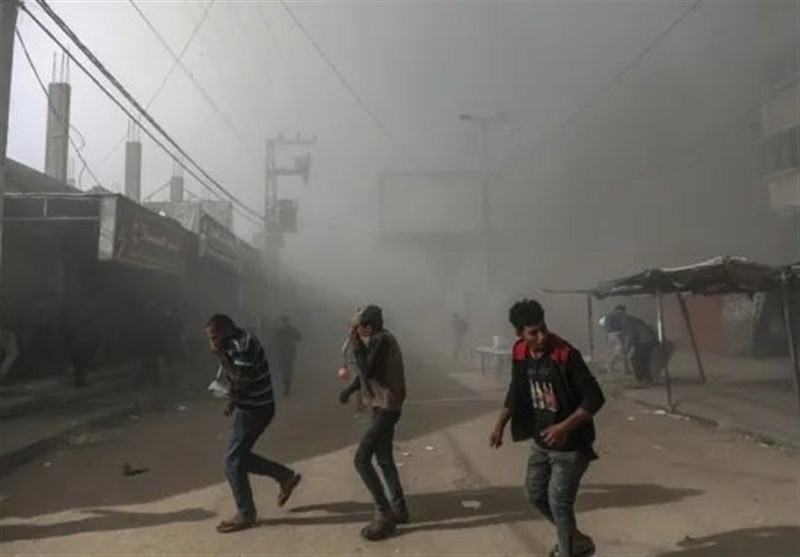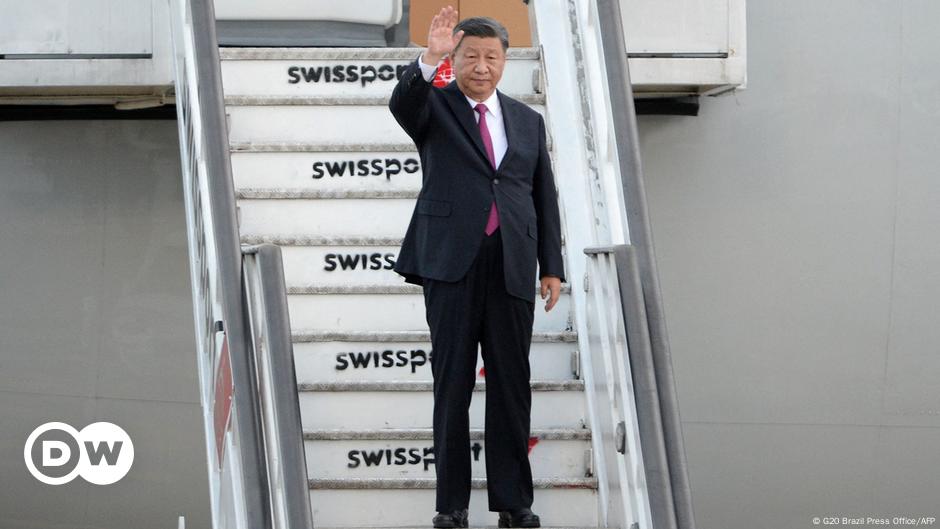This sounds like a vicious cycle and similar to the cycle of clearing areas again and again from Hamas, which the IDF chief of staff describes as a “Sisyphean task.”
By SETH J. FRANTZMAN NOVEMBER 24, 2024 07:51 Updated: NOVEMBER 24, 2024 08:00 IDF RESERVISTS have served 10 months in Gaza.
(photo credit: IDF SPOKESPERSON'S UNIT)
IDF RESERVISTS have served 10 months in Gaza.
(photo credit: IDF SPOKESPERSON'S UNIT)
On Oct. 7, 2023, the chief of staff of the 14th Armored Reserve Brigade was supposed to be celebrating his birthday. Instead, like the rest of Israel, Col. Amir Ofri woke up to find the country plunged into war.
“I was in the North for the weekend. We woke up in the morning aware of the sirens. We knew we had to go south. Our brigade is located in the South,” he recalls. The tank unit had trained for this kind of fighting, and it was prepared to head to the Gaza border.
More than a year later, the officer has just left Gaza’s Netzarim Corridor after one of many deployments during this long grueling conflict. Like many of the 300,000 reservists called up after Oct. 7 in Israel, he has spent much of the past year in the army. This has been difficult on the family unit. Col. Ofri is a married father of three.
He is in a senior position at a large Spanish-owned company that produces valves and related items for irrigation, fire protection, and other major industries. In a sense, he has the same kind of key job in his armored unit as in his civilian life. However, for Israel to move forward on both the home front and the war front, commanders like Ofri and their soldiers will need to be able to return home eventually. This is his story and that of so many of the reservists in Israel.
AT THE beginning of the war, the 14th Armored Reserve Brigade was ready to head to Gaza. As a reserve unit, its tanks were primed and on hand at a depot. This enabled the unit to scramble quickly toward the frontier. There was no shortage of men; the brigade received a 160 percent turnout as reservists flocked to the unit. Older men and those who had stopped serving for duty in the past arrived. “Everyone who could jump on a tank and run to the battle” came to the unit.
The 14th Armored was deployed to guard some of the kibbutzim along the southern border in the first days after the Hamas massacres. Hamas had attacked through the border fence, and there were now around 60 areas open along the 65-km. (40-mile) border. The tank unit helped patrol this open border and plug the gaps in the line so that no more terrorists could come through. “We were there until the first ground offensive into Gaza,” the officer recalls.
The tanks from this brigade entered Gaza on October 29, two days after Israel’s ground offensive in Gaza began. The move into Gaza marked a big shift for the men. They had been protecting areas that Hamas had attacked and destroyed. Now they got to go into Gaza to fight the enemy. They moved from defense to offense, alongside tens of thousands of other IDF soldiers who poured into Gaza.
“We fought from Oct. 7 to the beginning of April,” the commander relates.
The armored brigade has four battalions of tanks. Armored brigades are historically organized in this manner. Each battalion has several companies of tanks, and every company has around a dozen tanks. In this war, the IDF units operated together such that one would have infantry and tanks often paired to carry out operations. In many situations, a brigade such as the 14th would lend one of its tank battalions to another unit so that infantry or paratroopers would have tanks with them when they cleared an area.
“We built our unique brigade with various forces under us, not only armored, and we were almost everywhere in Gaza,” the commander recalls. What that means is that his brigade also had other units, such as infantry, paired with it for operations.
Stay updated with the latest news!
Subscribe to The Jerusalem Post Newsletter
The 14th Armored fought in many parts of Gaza
Ofri recalls operations in Beit Lahiya, a village that overlooks the Erez Crossing in northern Gaza, as well as in Beit Hanoun, a village that is across from Sderot. These two northern Gaza communities were used by Hamas to attack Israel and fire rockets. They also had tunnels in them. They are the key to northern Gaza.
From those initial forays, the soldiers then expanded operations into Shejaiya near Gaza City and Khan Yunis in southern Gaza. Khan Yunis, the hometown of Yahya Sinwar, the brutal Hamas leader, is full of tunnels. “We had a lot of operations and attacks and different environments to fight in,” the officer says. Each area was different. Some were open areas, and some were densely packed urban neighborhoods. This was a learning experience as well, learning how to fight Hamas.
In the spring, the 14th had a brief respite when it was redeployed out of Gaza after April. This was the time of the war when Israel was leaving many areas in Gaza and preparing for the Rafah offensive in May.
As the IDF left Gaza, Hamas returned to many areas, such as Jabalya in northern Gaza. Areas the 14th had fought in, such as Beit Lahiya or Shati, would be cleared again by the IDF.
THE RESERVISTS went home. But as spring turned to summer, the IDF needed them again. In August, orders arrived.
The men had been home for three months, trying to set their affairs in order. The second call-up saw the unit sent to the Netzarim Corridor. This is a swath of land south of Gaza City. It is named for a Jewish community called Netzarim that once existed on this land. The landscape is open country. There are two roads that cross the corridor. One is called Salah al-Din, which connects Gaza City to Khan Yunis; the other one, called Rashid, runs along the coast that connects the coast of Gaza to areas in southern Gaza such as Deir el-Balah and Mawai, the humanitarian area.
The IDF chose to take control of the Netzarim Corridor to monitor the movement of the population from northern Gaza to the South and to provide humanitarian aid. For instance, the ill-fated US-built temporary pier was attached to the corridor in the spring of 2024. The pier only operated for a short time and didn’t fulfill its task of providing aid from Cyprus. Instead, the IDF would enable trucks to enter the area via a gate that is 3.2 km. (2 miles) west of Kibbutz Be’eri. The gate is called Gate 96.
The 14th came to the area to take over from other units that had served there, such as the 2nd Carmeli Reserve Brigade, which was being sent north. This area of Gaza is now usually run by one IDF division. The 99th Division and the 252nd IDF Division have been rotating in and out of the corridor, using reserve brigades to control the area and secure it.
For men such as the chief of staff of the 14th Armored, what this means is they have spent 10 months in the reserves, and now the war in Gaza involves settling into routine, such as patrolling this area south of Gaza City.
THE OFFICER emphasizes how important it is for the reservists to have time at home and time back at their work. With 10 months in and only a few months of time in civilian life, their lives have been disrupted in an unprecedented way. Recent reports indicate that some reserve units are seeing a drop in the number of men showing up for duty. “We need to take care of our people, which is a challenging issue,” says Col. Ofri.
He describes the challenge as not just about the men in the unit but also their families at home. “This is a critical issue for us now. If I can compare it to the first time we came out [of Gaza], we have a huge challenge with our places of work.”
In Israel, reservists have various safeguards so that they can’t be fired from their places of work. However, what happens when the reservists also owns a company? What happens when a reservist is a project manager at a company? In many cases, those people may return to work and their position may still exist, but the team they worked with has been sent on to do other projects. These types of small businesses have a hard or impossible time functioning without the men who run them.
The commander says he has dozens of soldiers who now don’t have a place to return to work. “Not all of them were fire because it’s against the law. But people went to work, and their jobs have been taken over. Even those in such high positions as CEOs or those who are managers or lead technical development teams [find that their jobs no longer exist].” The officer describes his own company, where he has hundreds of employees. “It’s okay that the government pays you your salary and expenses, but in the end you need people to work. The money is not what matters, the company needs to survive,” he says.
THE SITUATION is now changing in Israel. Hamas is not the same threat today as it was a year ago. Since it has been ground down, the IDF can manage the war in Gaza with fewer units. Reserve units are also fighting Hezbollah in the North. The officer says that there are many solutions to the current challenge. Some reservists now have more time for the army because they don’t have much to return to at work. Others need to return to work. The IDF is also seeking to recruit more people, primarily ultra-Orthodox Jews, because of the manpower shortage that this war has revealed.
Col. Ofri is optimistic that a solution will be found to the challenges ahead. However, for brigades such as the 14th Armored with its thousands of reservists, these will continue as the war continues. The issue is bigger than just the war or short-term solutions for reservists. It is also a question of showing gratitude to the larger family circle around the soldiers who have been called up for 10 months. It is also about thanking those who remained behind in the private sector and had to do the job of two or three workers because people were called up to reserves.
Some reservists in Israel are now facing their fourth call-up of this war. If the war in Gaza or the North doesn’t wind down, more men will be called up in January.
IN GAZA meanwhile, the commander assesses that Hamas is largely defeated. It’s no longer an organized fighting force.
“They are running and hiding. They don’t wear uniforms. They are wearing civilian clothes. They are carrying out a guerrilla type of war,” he says. Hamas uses human shields and is afraid of fighting at night. It conducts small hit-and-run attacks but mostly flees and hides in schools and civilian areas. “They know we don’t bomb schools and hospitals and refugee camps. They hide in the tents. We see them in the tents. We see them sending women to check us and study us,” the commander says. What he means is that Hamas uses civilians, such as women, as scouts to monitor the IDF so the Hamas terrorists can then attack. The colonel recalls one incident near a school in Bureij in central Gaza, which is south of Netzarim, where Hamas fired an anti-tank missile from the vicinity of a school. Hamas had also placed improvised explosive devices.
The war has changed. Hamas can’t carry out combined attacks with numerous men. They don’t function as a fighting force, and they have fewer munitions and a different arsenal from October 2023. “Now they just put an IED [improvised explosive device] and go back, and they have snipers who are looking for our forces. They send [civilian] people to us to get us to expose our soldiers, and then shoot at us.”
IN NETZARIM, the corridor borders areas such as Nuseirat and Bureij, towns that are built around old refugee camps. This area has never been conquered by the IDF, and Hamas has resources in these areas. The 14th Brigade was responsible for securing the road where humanitarian trucks – around 30-35 a day – would pass. The soldiers would help escort and protect the trucks, the officer says.
“We took them [trucks] inside to a point where we let them go on by themselves.”
When the aid trucks leave the area controlled by the IDF, they are stopped by Hamas, who move some of them to specific Hamas-controlled warehouses from where the terror group then controls the aid.
“We saw the Hamas people come after it [trucks] with white Toyota trucks – the same ones they used on Oct. 7– and taking things from the warehouse. I can say that the Netzarim Corridor is the one that gives us an opportunity to provide food in these areas; and second, over and over, Hamas use the humanitarian aid, which the IDF escorts, to support their fighters. They shoot their own people.”
This sounds like a vicious cycle and similar to the cycle of clearing areas again and again from Hamas, which the IDF chief of staff describes as a “Sisyphean task.”
Hamas also tries to infiltrate the humanitarian convoys. The 14th Armored saw Hamas seeking to use humanitarian cover to move from northern Gaza to the south and vice versa. They use the cover of every humanitarian element. For instance, they sought to exploit the pause in fighting linked to the vaccination campaign that began in September.
The officer says that Hamas even tried to use medical convoys to move from north to south. “The bottom line is that Hamas makes use of the humanitarian efforts that Israel and the IDF are making... This comes at the expense of the people. As I said, they jump on trucks and steal food... We were in Netzarim for two months, and from day one we saw Hamas even in UN cars, driving UN cars.” Hamas would even try to use the cover of United Nations-backed convoys, putting their people into the convoy.
The IDF now faces choices in Gaza. With the operations in Jabalya to clear out Hamas terrorists there that took place in October and November, it is clear that Hamas still has forces in many areas. Hamas continues to control the camps such as Nuseirat and Bureij, and it holds 101 hostages in Gaza.
Col. Ofri speaks about his mission and how he recalls Oct. 7 and the harrowing phone calls of people under siege by Hamas that day, calling for help as the border collapsed under the attack.
He speaks about the confidence he has in his tanks and how Israeli technology has made the Merkava tank secure against enemy threats. His unit has been targeted by hundreds of missiles, RPGs (rocket-propelled grenades), and IEDs. The success of the tanks in Gaza “allows us to fight and win and bring back our soldiers to their homes.”
He says, “It should be very clear that our task is not over until we bring back the hostages and until we finish and make sure we have no enemies that can hurt our people. I have many employees currently working who live in Sderot and the kibbutzim. My goal is to make sure they can go back to their homes. More than 90 percent have returned. Sderot city is open, and life has come back. You can see children, and schools are open. You can see people living, and that is what we are fighting for – to live in our own country without anyone bombing us.”

 By The Jerusalem Post (World News) | Created at 2024-11-24 06:10:08 | Updated at 2024-11-24 08:21:31
2 hours ago
By The Jerusalem Post (World News) | Created at 2024-11-24 06:10:08 | Updated at 2024-11-24 08:21:31
2 hours ago








